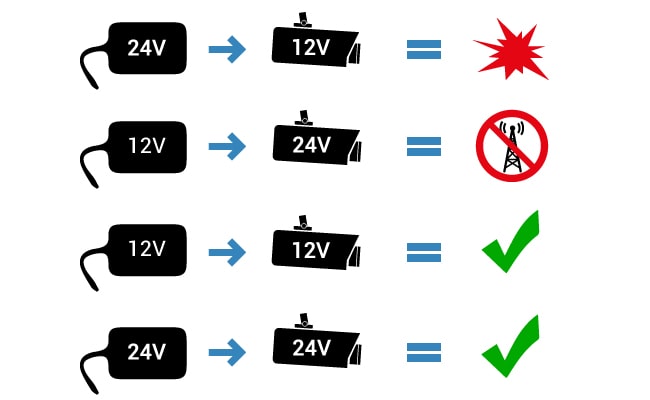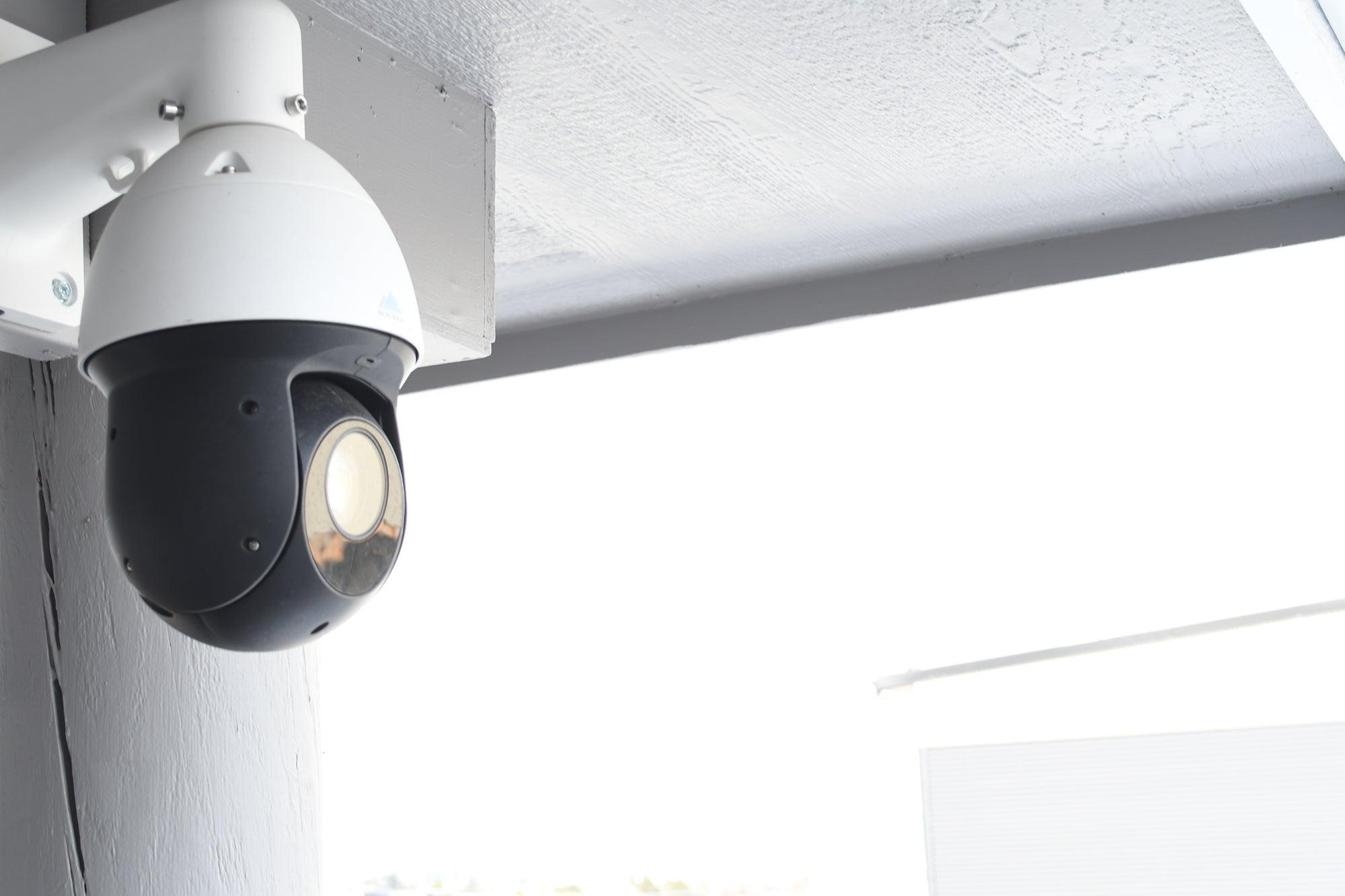Video loss in security cameras often stems from power supply issues or poor network connections. Faulty cables or hardware malfunctions can also lead to this problem.
Ensuring your home or business remains secure hinges on the reliability of your security camera system. Video loss is a common hurdle that can compromise this security, leaving your property vulnerable. Understanding the root causes of video loss is crucial for troubleshooting and maintaining the effectiveness of your security cameras.
From fluctuating power supplies and network instability to damaged cables and equipment failure, several factors can disrupt your camera’s ability to record and transmit video. By addressing these issues promptly, you can safeguard your property against potential security breaches and maintain a vigilant eye over your premises.
Introduction To Video Loss Issues
Security camera video loss is a common problem. It can happen suddenly. Users may find cameras working one moment and not the next. This issue affects the purpose of having security systems. Let’s explore the causes and impacts of video loss.
Common Concerns With Security Cameras
- Connectivity issues often disrupt video feeds.
- Power failures can lead to unexpected outages.
- Hardware malfunctions affect camera performance.
- Software glitches may cause intermittent losses.
- Environmental factors, like weather, impact cameras.
The Impact Of Video Loss On Security
Video loss can compromise safety. Critical moments might not get recorded. This can lead to missed evidence. It reduces trust in security systems. Quick detection and resolution are key to maintain security integrity.

Credit: reolink.com
Analyzing Connectivity Problems
Let’s dive into connectivity problems that lead to video loss in security cameras. We’ll explore common issues and their solutions.
Wired Vs. Wireless Vulnerabilities
Wired security cameras can lose video due to cut cables or loose connections. It’s vital to check all physical links. Wireless cameras face different issues. Weak signals or dead batteries often disrupt service. Below, find common vulnerabilities for both types:
- Physical Damage: Exposed wires are prone to damage.
- Power Outages: No power means no video feed.
- Equipment Failure: Cameras and recorders can fail.
Signal Interference Challenges
Wireless cameras can suffer from signal interference. This can be from Wi-Fi devices, microwaves, or even walls. Here’s how to tackle these challenges:
| Source of Interference | Solution |
|---|---|
| Wi-Fi Devices | Change Wi-Fi channel or frequency. |
| Microwave Ovens | Move camera away from kitchen appliances. |
| Physical Obstacles | Reposition cameras for a clearer signal path. |
Power Supply Interruptions
Security cameras rely on steady power to keep watch. Power supply interruptions can cause video loss. This is frustrating for home and business owners.
Electrical Failures And Fluctuations
Security systems are sensitive to power issues. An electrical failure can disrupt camera function. Even a short power outage can stop recording. Power fluctuations harm camera components over time. These include surges and dips in electricity supply.
- Outages turn cameras off
- Surges may damage equipment
- Brownouts reduce recording quality
Battery Backup Solutions
Battery backups provide power during outages. They keep cameras running smoothly. This ensures continuous surveillance. Consider a UPS (Uninterruptible Power Supply) for critical areas.
| Backup Type | Run Time | Best For |
|---|---|---|
| Standard Battery | Short-term | Individual Cameras |
| High-Capacity Battery | Long-term | Multiple Devices |
| UPS System | Extended | Whole Security System |
Choose a backup solution that fits your security needs. Regular maintenance checks are vital. They ensure backup systems work in emergencies.

Credit: reolink.com
Hardware Malfunctions
Security cameras keep our homes safe. Sometimes, they stop working. This is often due to hardware malfunctions. Let’s explore two main causes: camera wear and tear, and manufacturing defects.
Camera Wear And Tear
Over time, security cameras can wear out. This is normal but unfortunate. Key parts like the lens or the wiring might fail. This leads to video loss. Below are common wear and tear issues:
- Weather damage: Outdoor cameras face rain, wind, and sun. These elements can harm cameras over time.
- Physical damage: Accidents happen. Cameras can get hit or fall. This can break important parts.
- Internal component failure: Parts inside the camera, like the sensor, can stop working. This is often due to age.
Manufacturing Defects
Sometimes, cameras arrive with problems. These are called manufacturing defects. They can cause video loss right from the start. Here are common defects:
- Flawed lenses: A bad lens means bad video quality.
- Improper wiring: If wires inside aren’t right, the camera might not work.
- Defective sensors: Sensors catch the image. A bad sensor means no picture.
Manufacturing defects are often covered by warranties. Always check your camera’s warranty.
Software Glitches And Firmware Issues
Security cameras keep our homes safe. But sometimes, they stop working. This can be due to software glitches and firmware issues. Let’s understand these problems.
Outdated Firmware
Firmware is like a camera’s brain. It tells the camera how to work. When it’s old, the camera may not work right. Imagine using a very old phone. It’s slow, right? Cameras can be slow too if their firmware is old.
- Signs of outdated firmware include video loss, poor quality images, or cameras not starting.
- Solution: Update the camera’s firmware regularly. This keeps the camera smart and fast.
Corrupted Software
Software is like the camera’s guide. It helps the camera decide what to do. Sometimes, this guide gets mixed up. We call this corrupted software.
Corrupted software can make cameras act weird. They may stop recording or turn off by themselves.
- Check the camera’s software version.
- Reinstall the software if it’s corrupted. This can fix the problem.
Both firmware and software are important for cameras. Keep them updated and correct to avoid video loss.

Credit: montavue.com
Environmental Factors Affecting Cameras
Environmental factors play a crucial role in the performance of security cameras. Understanding these factors can help prevent video loss and maintain surveillance integrity.
Weather-related Damage
Security cameras face various weather conditions. Extreme temperatures, rain, and snow can cause damage. Cameras may experience fogging, lens condensation, or electrical issues. These conditions lead to video loss or poor image quality.
Preventive measures include:
- Using weatherproof housing
- Regular maintenance checks
- Installing cameras under eaves
Physical Obstructions And Vandalism
Objects can block camera views. Trees, signs, or decorations might obstruct the lens. Regular trimming and strategic placement ensure clear views. Vandalism poses a threat to security cameras. Hooligans might spray paint lenses or damage the equipment.
Solutions include:
- Protective casings
- Anti-vandalism coatings
- Positioning cameras out of reach
Network And Bandwidth Limitations
Network and bandwidth limitations can cause video loss in security cameras. Understanding these factors is essential for a reliable security system.
Overloaded Networks
Security cameras need a stable network. An overloaded network can disrupt this stability. This happens when too many devices use the network. Cameras then compete for the limited bandwidth. Video quality drops or cuts out entirely.
- Reduce the number of devices connected.
- Upgrade to a higher capacity network.
Configuring Adequate Bandwidth
Cameras need enough bandwidth to send video data. Without it, video loss occurs. Set your network to prioritize security footage. This ensures smooth video streaming.
| Camera Quality | Bandwidth Needed |
|---|---|
| 1080p | 2-4 Mbps |
| 4K | 15-20 Mbps |
Check your camera’s manual for its bandwidth needs. Then, configure your network accordingly. Your security system’s reliability will improve.
Troubleshooting And Prevention Strategies
Security cameras are crucial for safety. Yet, video loss can occur. Understanding how to troubleshoot and prevent issues is key. Let’s explore strategies to keep cameras working well.
Routine Maintenance Tips
Regular checks ensure camera functionality. Perform these steps:
- Clean lenses for clear video.
- Check wires for damage or wear.
- Test power supplies to prevent failures.
- Update firmware for latest features and fixes.
Use a checklist for consistency.
Upgrading Outdated Systems
Old systems often cause video loss. Upgrades can fix this. Consider these options:
| Upgrade Type | Benefits |
|---|---|
| HD Cameras | Better quality and detail. |
| Network Video Recorders (NVR) | Improved storage and access. |
| Power Over Ethernet (POE) Switches | Simplified wiring, reliable power. |
Work with professionals for best results.
Legal And Privacy Considerations
Legal and privacy considerations play a crucial role when addressing video loss in security cameras. The causes of video loss could stem from technical issues, but it’s essential to ensure that any measures taken to resolve or prevent video loss are in strict compliance with the law. Let’s examine the legal aspects and privacy norms that govern the use of security cameras.
Compliance With Surveillance Laws
Security cameras must adhere to surveillance regulations. These laws vary by location. They dictate where cameras can be placed and what they can record. It’s critical to understand these laws to avoid illegal surveillance and the potential consequences that come with it.
- Public vs. private spaces: Cameras in public areas are generally acceptable but require clear signage.
- Recording consent: Some areas require consent from people being recorded.
- Data storage and access: Laws often outline how long footage can be kept and who may view it.
Respecting Privacy In Surveillance
Respecting privacy is as important as complying with laws. Security cameras should protect people while respecting their privacy.
- Minimize intrusion: Place cameras to only capture necessary areas.
- Informing individuals: Use signs to let people know about surveillance.
- Secure data handling: Ensure footage is safe from unauthorized access.
Understanding these considerations helps maintain trust and prevents legal issues.
Conclusion: Securing Reliable Video Surveillance
Ensuring a security camera’s reliability is crucial. Video loss can compromise safety. This section summarizes key takeaways. It also explores future security camera technology trends.
Summarizing Key Takeaways
- Regular maintenance prevents hardware failure.
- Software updates protect against glitches.
- Quality cabling avoids signal disruption.
- Proper installation reduces environmental impacts.
- Professional monitoring catches issues early.
Future Trends In Security Camera Technology
Smart cameras adapt to changes. They use AI for better detection. Wireless technology is growing. It offers easier installation. Cloud storage improves data management. Power over Ethernet (PoE) provides reliable power supply. Cameras are becoming more resilient against hacking.
| Trend | Benefit |
|---|---|
| AI Integration | Enhanced recognition |
| Wireless Systems | Flexible placement |
| Cloud Solutions | Scalable storage |
| PoE Innovations | Uninterrupted power |
| Cybersecurity Measures | Increased protection |
Frequently Asked Questions
Can Weather Affect Security Camera Functionality?
Bad weather can interfere with security camera performance, causing issues like video loss due to fog, rain, or extreme temperatures.
Why Do Security Cameras Lose Signal?
Signal loss in security cameras can result from wireless interference, distance limitations, or obstructions between the camera and receiver.
What Causes Video Glitches In Cctv?
Video glitches in CCTV are often due to power supply problems, faulty cables, or incorrect installation impacting the signal quality.
How Can Power Issues Lead To Video Loss?
Inconsistent or inadequate power supply can cause security cameras to reboot frequently or shut down, resulting in video loss.
Is Firmware Outdatedness A Video Loss Reason?
Outdated firmware can lead to compatibility issues and bugs, which might cause intermittent video loss in security cameras.
Conclusion
Understanding the factors behind video loss in security cameras is crucial for maintaining a robust surveillance system. By addressing issues like power supply problems, cable faults, and outdated firmware, you can ensure your security setup operates seamlessly. Stay vigilant with regular maintenance to keep your property safe and secure.




